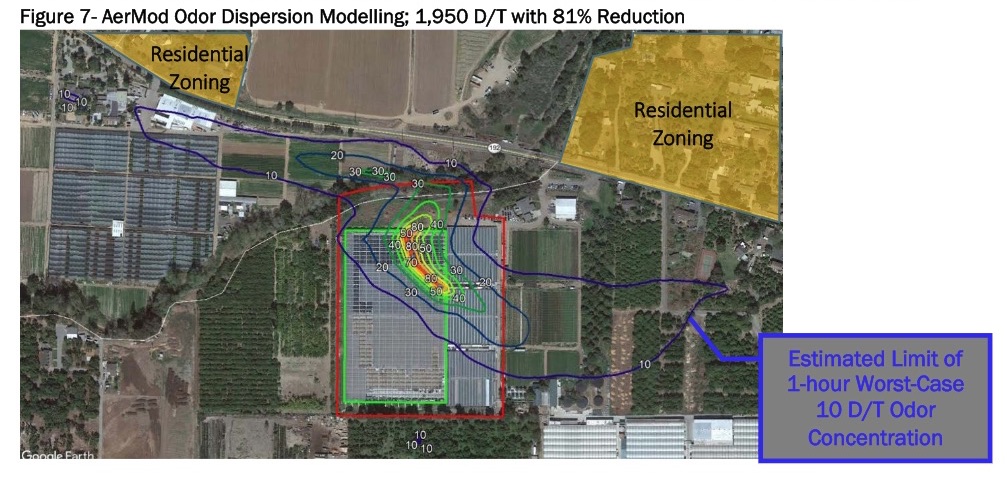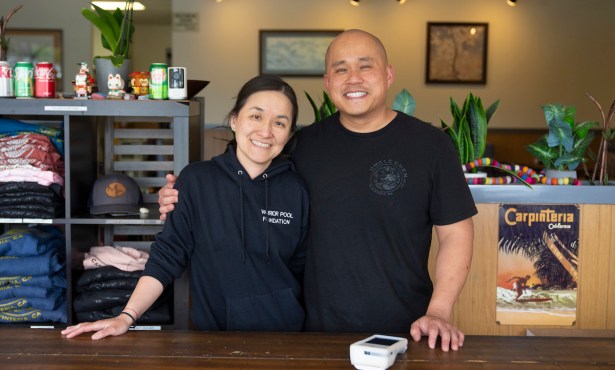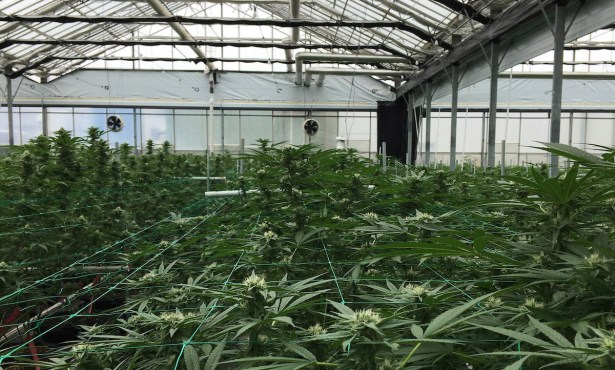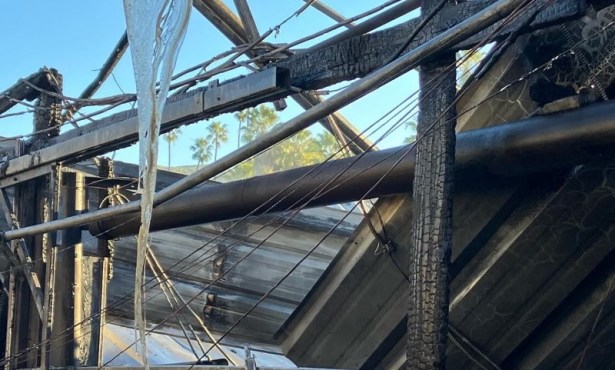Cresco Cannabis Odor Scrubbers Pass Planning Commission’s Smell Test
Promise of State-of-the-Art Odor Control Gets Proposed Greenhouse Unanimous Approval

Plans for a new cannabis greenhouse equipped with what’s promised to be a state-of-the-art odor-control system sailed through the County of Santa Barbara’s Planning Commission this Wednesday morning by a vote of 5 to 0. Even the commission’s two most vociferous critics of the cannabis industry’s inadequately mitigated odor impacts — Michael Cooney and John Parke — spoke positively of the plan unveiled by Cresco California to install carbon filters or scrubbers inside the proposed greenhouse. Cresco, one of the major cannabis operations in the country, applied for a greenhouse that’s about three-quarters the size of Paseo Nuevo Mall.
This new system — proposed two weeks ago just hours before the Planning Commission was first scheduled to vote on the project — was unveiled in response to 700 emails of community opposition and disappointment about another odor-modifying system that just two years ago had been extolled as the industry gold standard for odor control. That system involved vapor mists sprayed high into the air around the perimeter of greenhouses that are designed to chemically neutralize the tangy olfactory impact caused by cannabis terpenes. After two years, it’s clear this system — known as the Byers Scientific system — has clearly not quieted community concern nor persuaded members of the Planning Commission that the problem has been adequately addressed.
Critics of the cannabis industry have been insisting almost since the first cannabis greenhouses went operational in the Carpinteria Valley that carbon filters or carbon scrubbers were the most effective way to address odor creep. For almost as long, they’ve been told that carbon-scrubbing technology required more electricity than Southern California Edison could reliably deliver to Carpinteria, located at the outer reaches of its service area. Likewise, they were told that Carpinteria’s inventory of greenhouses — many of which date back to the 1960s — were too old and rickety to accommodate carbon scrubbers.
But Cresco is not proposing to convert an existing greenhouse from cut flowers to cannabis, but to create a new greenhouse engineered to meet the needs and challenges specific to cannabis cultivation. Unlike other operators who might be out to make “a quick buck,” Commissioner John Parke stated, “Cresco’s willing to make the long-term investment needed.” Parke also stated, “You have to appreciate someone who will say, ‘We’ll do whatever we can, not in the 19th inning, in the 9th inning.’ This is the right way to go about it.”
Commissioner Larry Ferini was even more enthusiastic in his praise of the project. “It’s what everyone’s been asking for.” Over the past three years, the planning commissioners have spent many hours trying to impose conditions on cannabis projects that addressed the stubborn issue of odor. “This is the first time I’ve seen an applicant try to thread that needle,” Ferini added. “They’ve been bearing more than their fair share of the burden for the industry.”
Michael Cooney, who represents the district that includes Carpinteria, expressed his abiding concern that the industry’s olfactory impacts have not been adequately addressed. Growers who violate the odor-control rules cannot adequately be disciplined, he noted, because there’s still no technologically reliable way to determine the point of origin for offending smells. “It’s vexing we still can’t tell which ones are violators and which ones are compliers,” he said. In that context Cooney said, what Cresco is proposing constitutes “progress.” Not only did Cooney vote in favor of the project, he was the first commissioner to speak on its merits and made the motion to approve it.
Such inside-baseball details aside, the commissioner heard from Maureen Clafffey, representing the newly formed Save the Arroyo Paredon Watershed — referring to the creek the project abuts. Claffey noted that she had been calling for carbon scrubbers as long as two years ago and expressed qualified satisfaction that the company finally came around to her way of thinking. As positive a development that may be, she argued that the project should be denied because its operations could imperil endangered species endemic to the watershed like steelhead trout, red legged frogs, and tidewater gobis. She stated she had collected 90 signatures on a petition against the project and took issue that not one representative from the company had ever contacted her despite the fact her family home — for four generations — is located right next door to the Cresco site.
None of the commissioners felt the evidence existed to support the impositions of new conditions in response to the concerns raised by Claffey. They argued that the proposal respected the 100-foot creek set-back rule designed to protect environmentally sensitive habitats. And a Cresco spokesperson said the company had reached out to Claffey on two occasions in 2019 — once in January and once in July — but that their efforts had not been productive.
Claffey, a tireless opponent of the new industry, has the option of appealing the Planning Commission’s decision to the Board of Supervisors, as she has other cannabis projects.
Should Cresco’s approval stand, the company has been given 12 months to perfect the proposed new carbon-scrubbing technology, now still in the prototype development stage and on the drawing board of a company in Holland. Until it’s been established that the new technology can perform as billed, Cresco proposed that the vapor system initially submitted be installed and kept operational for at least six months as a backup.
A Cresco representative said the vapor system — compared by critics to fabric softeners — would be 97 percent effective in eliminating errant odors from making their way to the closest residential property. The carbon system, the Cresco rep said, should be 99.95 percent effective. Nothing, they were told, was 100 percent.



